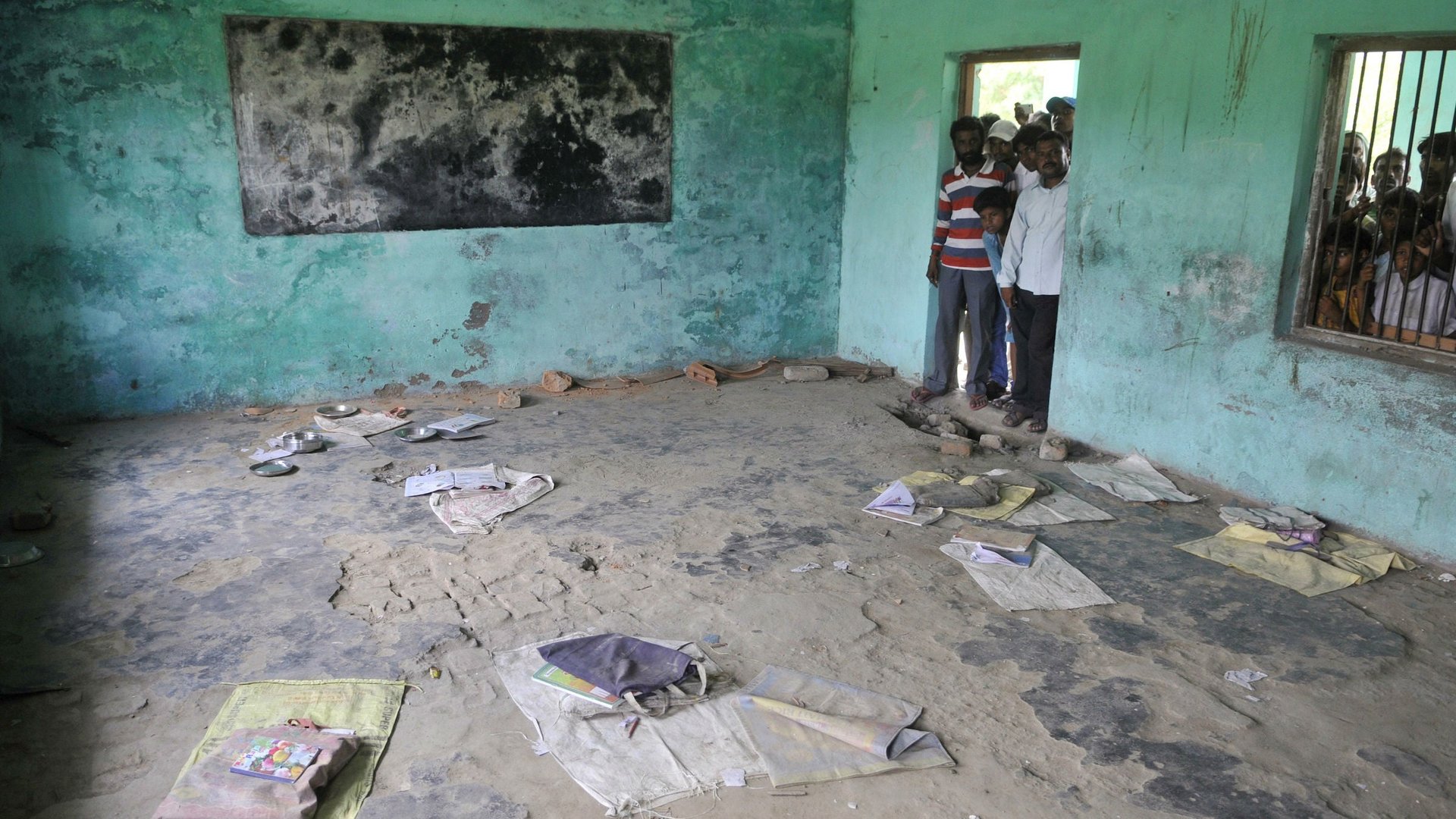India’s free school lunch program should be saved
A meal of rice, soybeans, and potatoes in eastern India has killed at least 25 children, set off violent protests, and put a spotlight on deficiencies in the world’s largest school lunch program. More than 20 other students remain critically ill, so the death toll could grow higher. Police say the school’s headmistress, who was responsible for storing food for the lunches, has fled.


A meal of rice, soybeans, and potatoes in eastern India has killed at least 25 children, set off violent protests, and put a spotlight on deficiencies in the world’s largest school lunch program. More than 20 other students remain critically ill, so the death toll could grow higher. Police say the school’s headmistress, who was responsible for storing food for the lunches, has fled.
Many people are angry, but a few are pleading for caution and pointing out that the meal program needs to be improved, not done away with entirely. Launched in the 1990s and firmly cemented in 2001, when India’s Supreme Court ruled a midday meal was the right of all primary school children, the scheme now feeds about 114 million students a day, according to the UN.
Food security, higher education rates, and even social change are some of the program’s benefits. The school provided meals are often the only one some children will have in a day. Often, the meals are the only reason parents allow their sons and daughters to go to school instead of plowing the fields or working in a factory, writes Shoba Narayan, an author who grew up in India.
According to the UN’s State of School Feeding Worldwide (pdf, p. 31) report this year, India’s program has led to an increase in school enrollment, a reduction in classroom hunger, and the promotion of gender and social equality. Children from the former caste rank of “untouchables” have registered higher enrollment rates since 2001, the report notes, for example.
What needs improvement is oversight. The program belongs to the country’s Department of School Education and Literacy, but implementation at the local level falls to state governments, village committees, school management, or NGOs and parent-teacher associations.
Shweta Sharma, a teacher in the state of Jharkhand, writes in an editorial that, in her experience, no one supervised the cooking or storage of food supplies (Wheat and rice are often stored in warehouses run by the government for up to three years.) The teachers, who often only had a half-hour break in a whole day, were left the manage the meals. Sharma writes:
There are things which can be done to make things work better. The rice supplied to schools must be tested and certified by government. There needs to be someone responsible for ensuring cereals and pulses used in cooking are properly cleaned, and the water is clean. There needs to be a clear chain of responsibility and accountability, among teachers and the community, for these processes. We need to have volunteers from the community to makes sure all this happens as it’s meant to happen.
Moreover, not all schools have enough money. In Bihar, one of the country’s poorest states and where the food poisoning took case, only about half of public schools can afford to provide the meals, an official said.